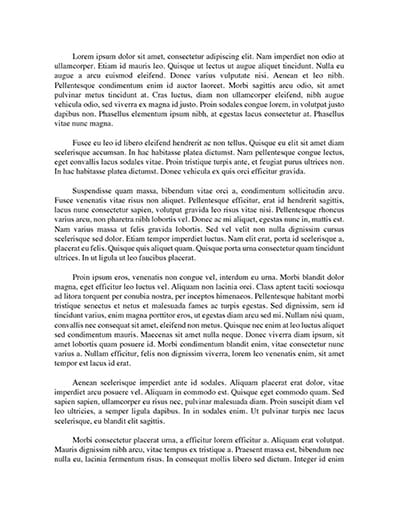Have you stuck on editing again? Try these new techniques from professional proofreaders and you will spend less time on numerous revisions and typos correction!
Submitting a paper that fits the academic requirements has more to it than just putting words together in a good coherent paper. Apart from delivering relevant, engaging and persuasive manuscript, you also have to ensure it’s 100% correct.
More often than not, students approach self-editing in half a shake. Five hours spent writing, five minutes spent blue-penciling the draft. But such rule of thumb is completely wrong! Moreover, it might cost you an ‘A’.
Ask yourself, why are you so reluctant to proofreading a manuscript according to Hoyle and then securing the high score? Look, you’ve done a great job drawing up a somewhat impressive paper, and it’s your sole obligation to yourself to ensure content reads perfectly and has zero grammar errors, typos, spelling mistakes, syntax flaws, etc.
Because this is what happens if tackled otherwise. An inferior paper regarding content scores better than exciting content with misspelled words and misused sequence of tenses here and there. Remember, a paper which is perfect is both well-written and edited. At the end of the day, up to 30% of paper success is largely based on proofreading quality.
So, here’re five professional tips to help you quick-start your editorship routine.
Tip #1. Look for errors with a fine-tooth comb
Retaining focus is a key. In case you’re distracted, unmotivated or simply sleepy, take a break until your energy level pops back up. As you’re revitalized once again, start talking turkey until you start feeling exhausted or unfocused once again. That’s the only path when you deal with lengthy 30-page term papers. Proofreading a paper with many pages is impossible in one sitting since you have to read a manuscript through slowly at least ten times to compliment your self-editing as acey-deucy.
Tip #2. Read papers backwards
Our treacherous minds have a bad habit – subconsciously correcting mistakes inside sentences when reading, which is a process you seldom can take full control of. To blaze through this pattern, proofread a draft from… the end. Check every word carefully starting at the end of the paper moving gradually to the beginning. When a standard self-editing pattern is broken, you will be able to track more mistakes and correct them. Brain won’t be able to soft soap you. It goes without saying, any proofreading attempt implies scamming through a text out loud.
Tip #3. Ask a friend for help
Having a second pair of eyes skimming through a manuscript is always a marvelous idea. In such case, editing a draft could be done at nearly a breakneck speed. Plus, you could hang out with a friend later and catch up on the latest campus news or whatever. In all times, two heads are better than one.
Tip #4. Take some pillow counseling
In the morning mountains, in the evening fountains. Writing a paper and proofreading a paper are two stand-alone tasks important enough to work on separately. That said, embarking on a written assignment at least two nights before the submission date is the right decision. One evening to prepare a draft, another evening – to proofread it. If a paper has more than 10 pages, you need more time to ensure a manuscript is top-notch. That’s why, once you’ve finished writing, take a manuscript and sleep on it, figuratively. Tomorrow you’ll wake up rested and energized to do excellent revision job once again. Mind that tired eyes fall into not seeing obvious errors, typos and punctuation overlooks.
Tip #5. Find an online expert for this extra edge
You might be dropping a proofreading hammer hard on this essay of yours, but the job might refuse to huddle through. However, it’s not the end of the world, not just yet. Instead of getting knickers in a twist, look for an academic writer online. Today, there is a plethora of services which will help you write your paper, proofread it, improve your already existing paper, etc. Such services are confidential and pretty affordable for an average student, so adopt such instrument to your arsenal too.
Between the jigs and the reels, treat proofreading with all the respect it deserves. Many students err on the side of self-editing in a half-hearted fashion. But you must know it is essential if you want to enjoy a high grade for a written assignment. What makes a stunning paper? 70% impressive writing, 30% meticulous proofreading. Stick to this formula and your grades for written home assignments will be improved.

